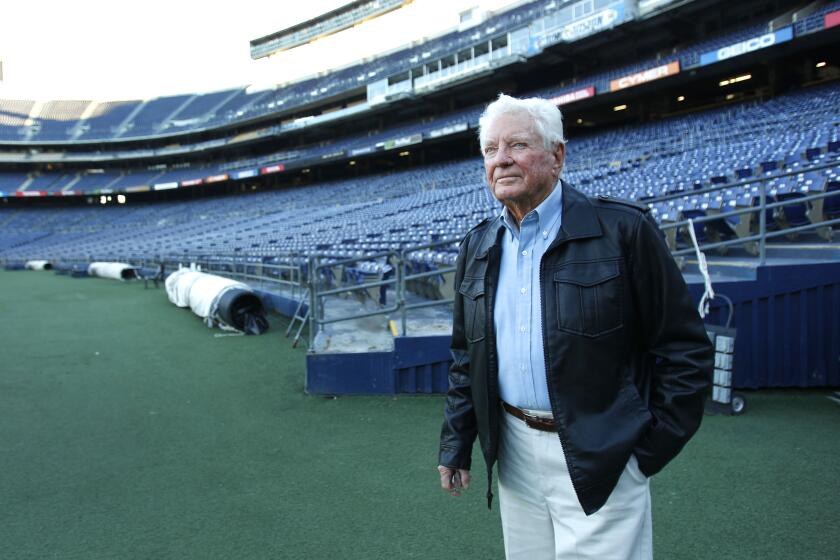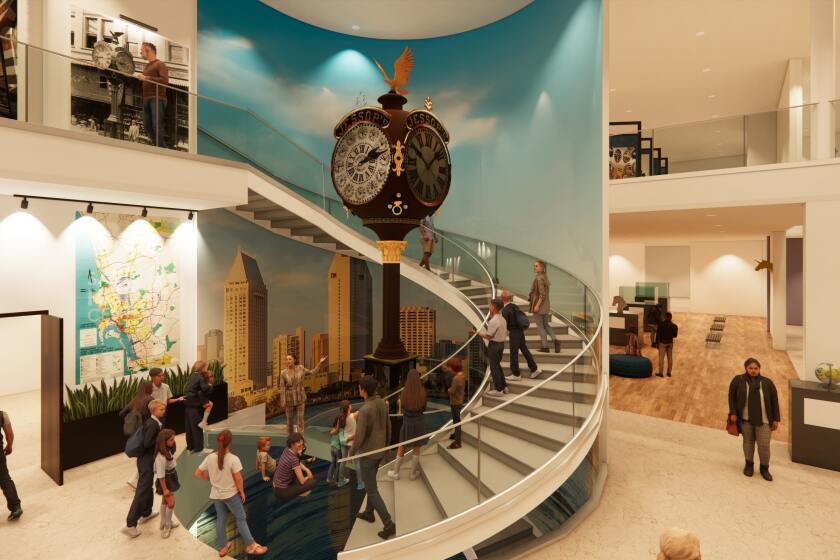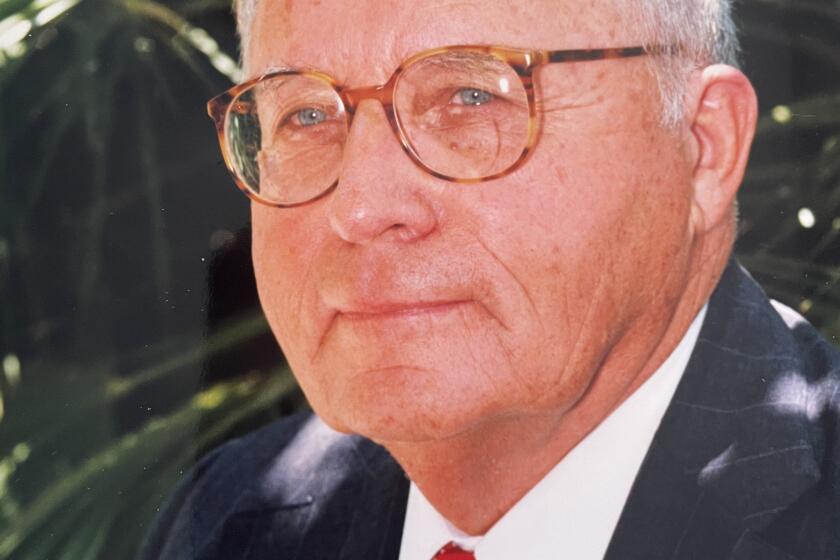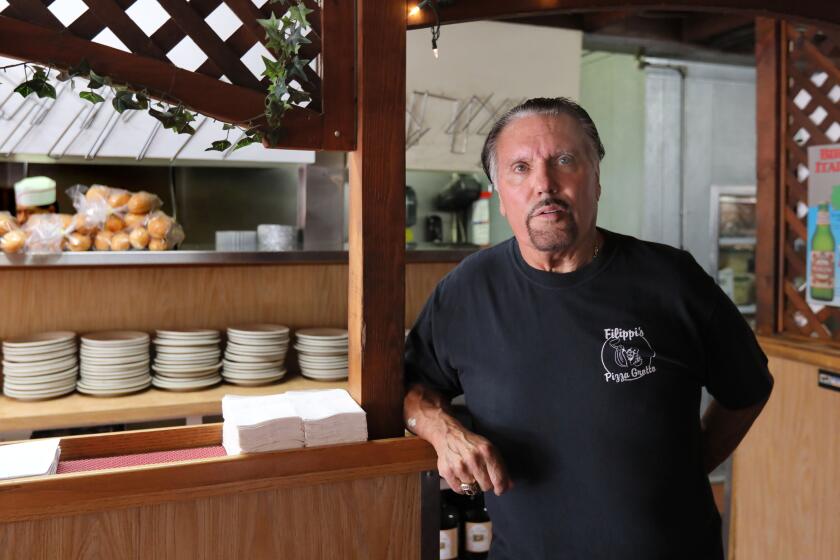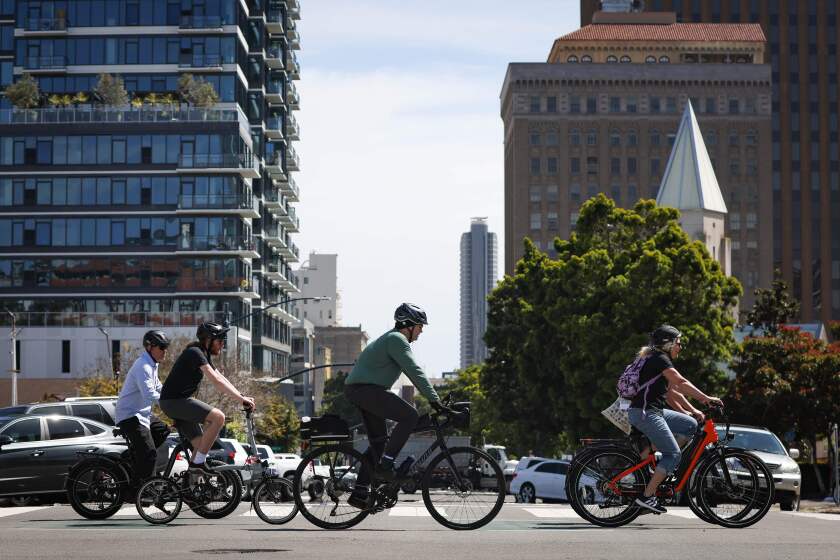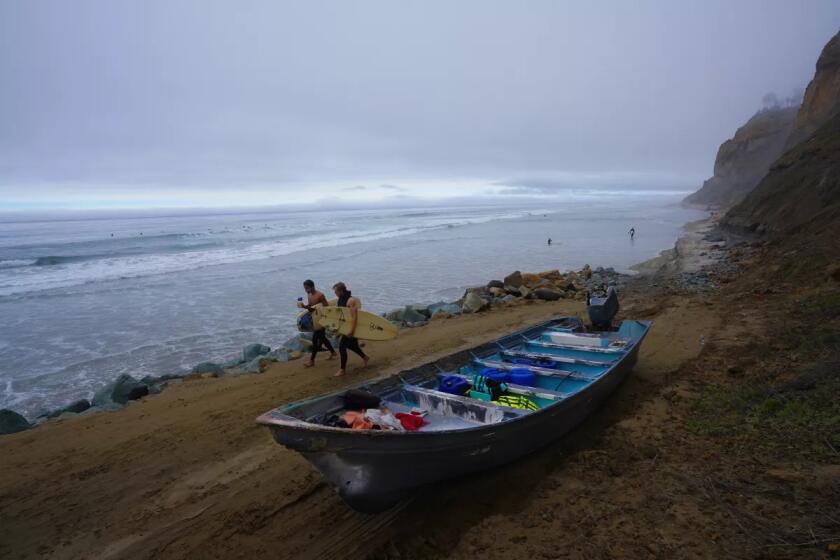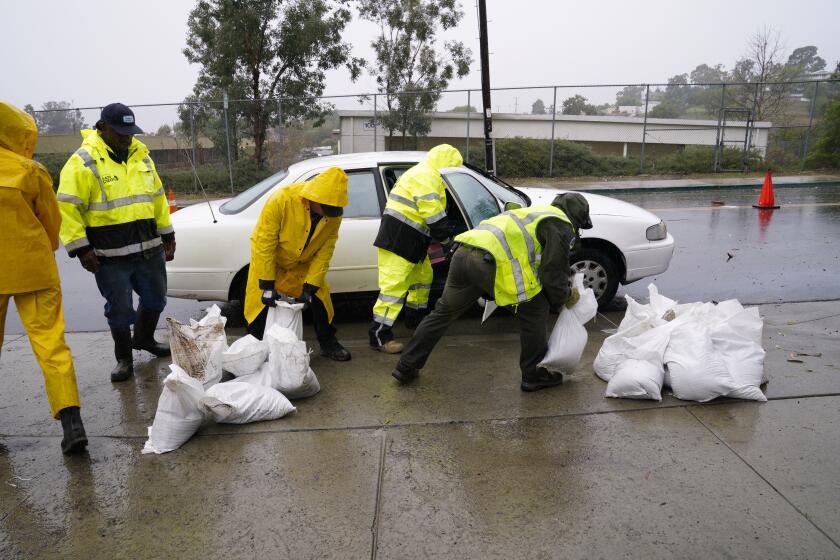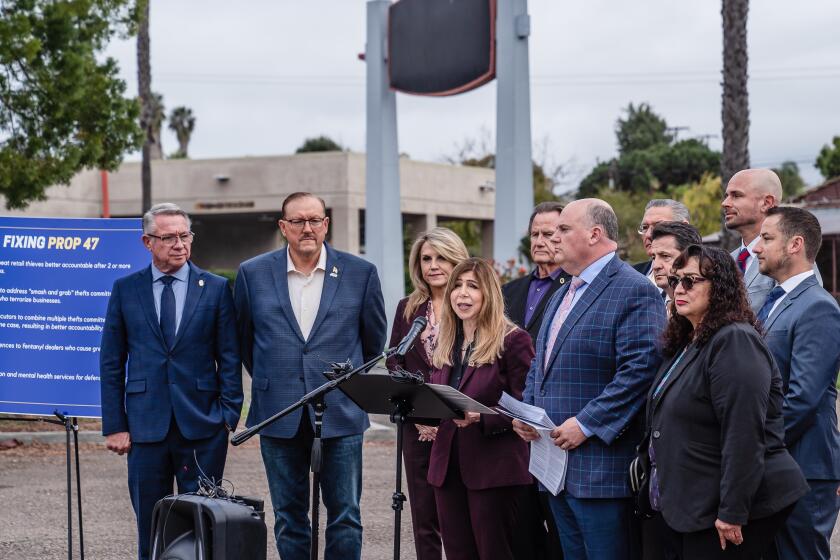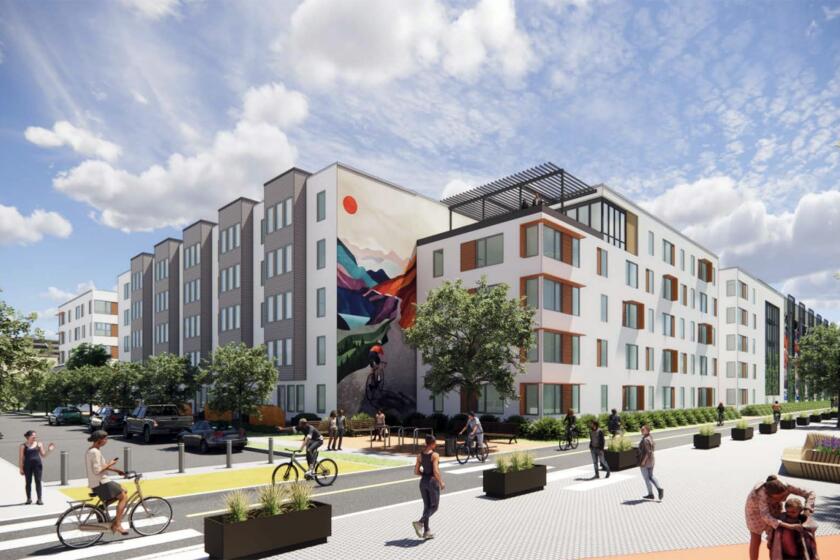Millions proposed for San Diego parks upgrades
Two proposals unveiled Thursday would provide a major funding boost for San Diego’s regional parks and accelerate some long-awaited projects, including a transformation of Balboa Park’s Plaza de Panama.
One proposal would significantly extend the life of a 2008 ballot measure that directs millions in lease revenue from Mission Bay Park each year into improvements there and in several other regional parks. The extension would allow the city to immediately fund major renovation projects, many in Balboa Park, by selling bonds supported by future revenues.
The other proposal would revive a plan approved in 2012 to replace cars and traffic in the center of Balboa Park with public gathering spaces by building a large parking garage and a bypass off the Cabrillo Bridge. A legal challenge to the plan, which would also upgrade the Plaza de Panama with a reflecting pool, was put to rest last September by the state Supreme Court.
Extending 2008’s Proposition C beyond its scheduled expiration in 2039 would require approval by a simple majority of city voters of a proposed November ballot measure, and the Plaza de Panama upgrades — estimated at roughly $50 million — would require some fund raising and approval by the City Council of a financing plan.
Mayor Kevin Faulconer expressed optimism about both proposals during a well-attended Thursday morning news conference in front of Balboa Park’s deteriorating Botanical Building, which could benefit from the proposed bond sales to fund regional park improvements.
“These ambitious plans will provide hundreds of millions of dollars more for San Diego’s major parks as well as finally elevate Balboa Park’s Plaza de Panama into one of San Diego’s — and I believe the world’s — premier public spaces,” Faulconer said. “Our parks are where San Diegans come together, and they have been for decades and generations. Now is our opportunity to pay it forward.”
City Attorney Jan Goldsmith, who helped defeat the legal challenges to the Plaza de Panama plan along with local attorney Scott Williams, called Thursday’s proposals by the mayor significant milestones.
“It’s rare in public office to see a situation where you are part of history on the local level,” said Goldsmith, suggesting future generations will take note of “the day the city got the cars out of Balboa Park.”
The San Diego Regional Chamber of Commerce endorsed both projects on Thursday.
The mayor revived the Plaza de Panama plan, which had been dormant since the legal challenges four years ago and the subsequent withdrawal of local billionaire Irwin Jacobs as the leading donor, by contacting a group called the Balboa Park Alliance.
Faulconer met on several occasions with Jacobs, most recently on Tuesday when the Qualcomm co-founder and his wife, Joan, told the mayor they would support the project and work with him to get it done, according to Faulconer’s office.
The Plaza de Panama plan has wide support from groups that promote and take care of Balboa Park. A few other groups that have consistently opposed the project, primarily based on aesthetic concerns,cq reiterated that opposition on Thursday.
“Obviously we think it is highly destructive to the park and will destroy the park as we know it,” said Bruce Coons, executive director of the Save Our Heritage Organisation.cq
Opposition seems less likely to Proposition C, which was approved by nearly 67 percent of voters in 2008 — well above the simple majority needed.
Proposition C lets the city’s general fund keep the first $20 million received each year from lease revenue in Mission Bay Park from Sea World, hotels, campgrounds, a recreation vehicle park and other uses. The rest of the lease revenue — about $10 million per year since 2013 —gets divided between a fund for Mission Bay Park upgrades and a fund for regional park upgrades.
Faulconer wants to delay expiration of the measure from 2039 to 2069, primarily to create a long-term revenue stream that would allow the city to pay for many large projects immediately by selling bonds that would be paid back with future revenues from Proposition C.
Faulconer is also proposing to slightly change the funding formula and accelerate completion of some Mission Bay Park projects by changing how they get prioritized.
The new funding formula would shrink the revenue directed to Mission Bay Park from 75 percent to 65 percent, so that the city could increase from 25 percent to 35 percent the revenue directed to regional parks: Balboa Park, Chollas Lake Park, Mission Trails Regional Park, Otay River Valley Park, Presidio Park, San Diego River Park and coastal beaches.
Faulconer’s staff estimates an extension through 2069 would generate $1 billion for Mission Bay Park and $578 million for regional parks.
The project prioritization change would allow the city to use cash on hand to pay for cycling trails, lighting, restrooms and playgrounds in Mission Bay Park while lengthy environmental approvals are under way for larger projects, such as dredging the bay and restoring wetlands where Campland on the Bay and the De Anza Cove mobile homes are located.
The City Council’s Infrastructure Committee voted unanimously on Thursday to forward the proposal to the full council for possible placement on the November ballot.
But some members said 2069 might be too long of an extension, suggesting that 2050 would make more sense because it would still allow the city to sell 30-year bonds, which is the typical length of such financing. They also said it might make sense to increase the portion of Mission Bay lease revenue that goes to the general fund from $20 million in future years, suggesting such increases should be tied to inflation.
None of the new money for regional parks under Proposition C would pay for the Plaza de Panama upgrades, Faulconer said.
The changes, which the council approved in 2012, would remove traffic from the heart of Balboa Park, create 6.3 acres of gardens and pedestrian-friendly plazas, and increase parking with an underground garage behind the organ pavilion featuring 797 spaces on three levels beneath a rooftop park.
Five areas would be restored to their historic use as pedestrian park spaces: the Plaza de Panama, Plaza de California, West El Prado, Esplanade and the parking lot behind the Spreckels Organ Pavilion. The plans would also increase available parking by an estimated 30 percent in the heart of the park.
Jacobs, the volunteer director and chairman of the Plaza de Panama Committee, said he was excited to see the project revived after years of legal wrangling.
“When you have a good idea sometimes it eventually does work its way through the complications to finally be achieved,” said Jacobs, a co-founder of Qualcomm. “We’re all looking forward to being able to proceed ahead.”
Opponents on Thursday reiterated previous complaints about the visual impact of the bypass off Cabrillo Bridge and the city’s plan to begin charging for parking to pay off the new garage.
The Save Our Heritage Organisation filed suit to block the project in 2012. A lower court ruled in their favor in 2013, but that was reversed by an appeals court and the state Supreme Court declined to take the case last year.
John Bolthouse, executive director of Friends of Balboa Park, said opposition to the project is isolated.
“The vast majority, almost unanimous among the organizations in the park tasked with taking care of the park and servicing the visitors to the park, are on board with this project,” he said.
Faulconer said the original 2012 cost estimate of $45 million for the project must be revised to reflect new state regulations and the need to pay prevailing wages.
Get Essential San Diego, weekday mornings
Get top headlines from the Union-Tribune in your inbox weekday mornings, including top news, local, sports, business, entertainment and opinion.
You may occasionally receive promotional content from the San Diego Union-Tribune.


